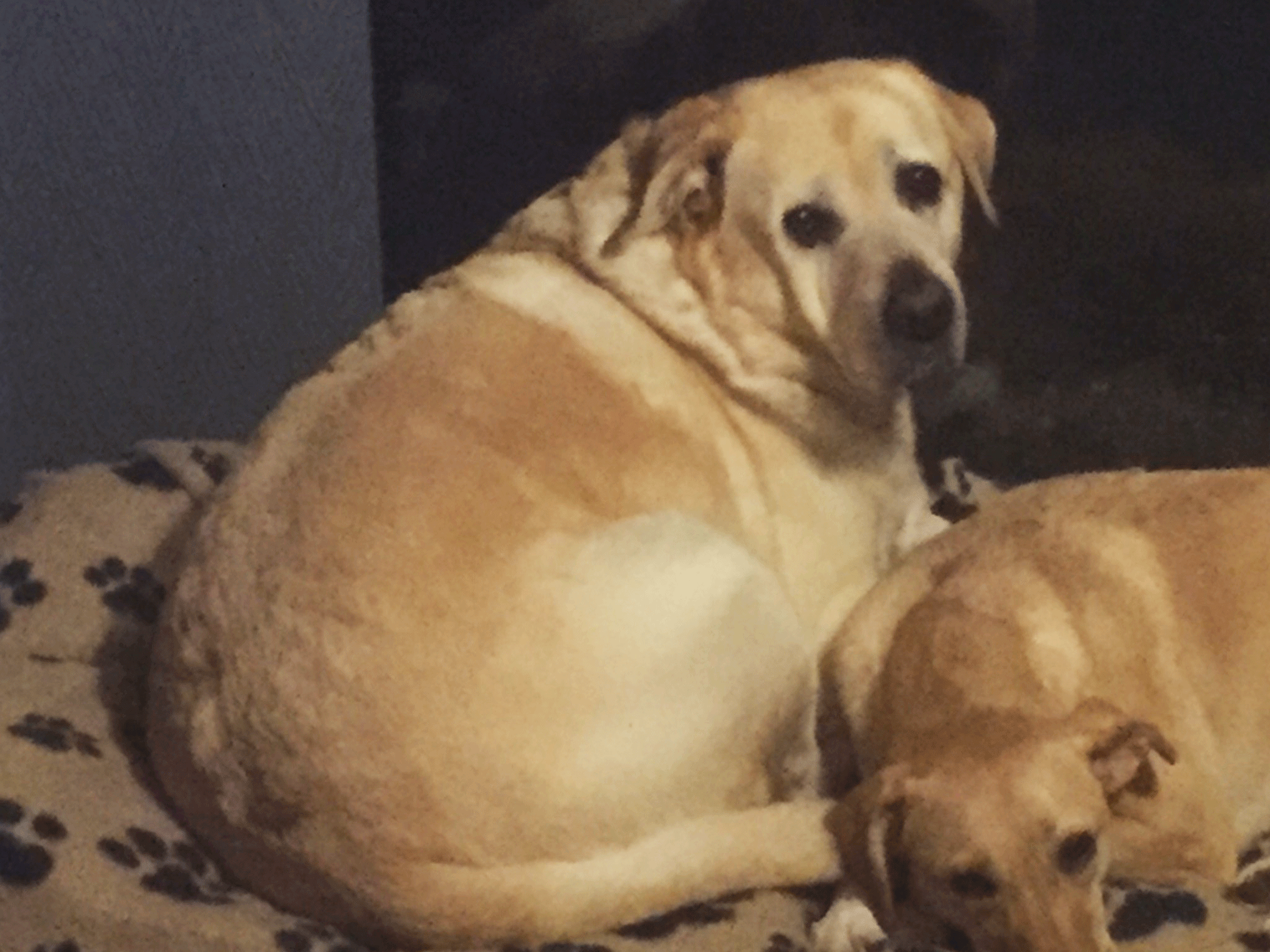

Keep An Eye On Your Dog's Energy & Endurance Overweight dogs typically don't have a visible waistline, there would be no distinction between their stomach and chest when looking at them from the side or above. Generally, you should be able to feel your dog's ribs which would feel like the back of your hand. If your dog is overweight you won't able to feel its ribs because the fat would be covering them. If you don't know if you should bring your dog to the vet there is a handful of ways you can determine if your pooch is overweight at home. When the exam is over your vet will let you know if your dog is overweight taking your pup's breed and physical build into consideration.
#Dog obese full#
When a dog is carrying extra weight it can be a sign of an underlying health condition or could contribute to other health issues such as diabetes or joint pain.Īt Lake Norman at Mooresville Animal Hospital, if we suspect your dog may be overweight, we will conduct a full examination of your pooch and weigh them on a scale.
#Dog obese skin#
While pets with a healthy muscle condition score, coat and skin quality are probably getting all the protein (and other nutrients) they need, problems with these body systems can be due to a wide variety of nutritional and non-nutritional problems, which can be diagnosed by a veterinarian.If you think your dog is overweight the first thing you should do is make an appointment with your vet. Within reason, more protein is not generally dangerous, but may be wasteful. Younger and geriatric pets may need more young pets for growth, and old pets because they appear to be less able to utilize dietary protein than are younger animals. As long as the diet has the proper balance of available amino acids, whether they come from plant or animal sources does not make any difference to the nutritional health of the pet.Īlthough energy requirements vary greatly, protein needs are fairly constant, with adult dogs generally needing at least 1 gram per pound, and adult cats at least 2 grams per pound. Animals use protein as a source of the amino acids they cannot make, and of nitrogen for the ones they can make. In healthy pets, coat and skin quality also can be affected by the amount of protein (and a number of other nutrients) consumed. The muscle condition score also helps estimate whether or not the pet is receiving enough protein. Veterinarians also use Muscle Condition Scoring to determine your pet’s health. Although both are about the same size, the highly active nature of the Jack Russell Terrier compared to the slower pace of the miniature poodle can result in very different energy intakes to maintain a healthy body condition.įor the long term, you will adjust the amount you feed your pet to keep it in a healthy, moderate body condition score according to the Body Condition Scoring Chart shown below: For example, an active Jack Russell Terrier versus a miniature poodle. As mentioned, these calculations can only give crude, “zip-code” level estimates of your pet’s Calorie needs (and so how much to feed), which can change with time and circumstances.įor example, some dog breeds also require more or less energy by the inherent nature of their breed.


 0 kommentar(er)
0 kommentar(er)
